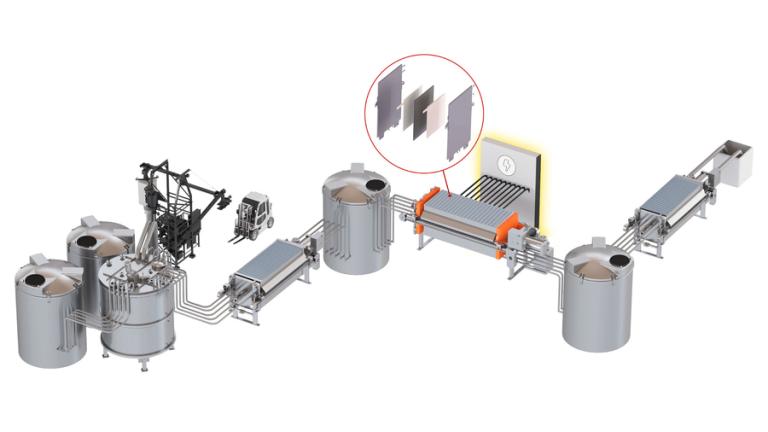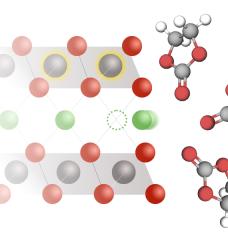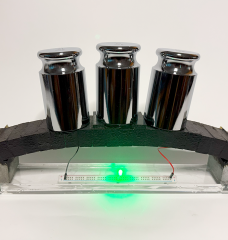
by Zach Winn | MIT News
Much like Middle Eastern oil production in the 1970s, China today dominates the global refinement of critical metals that serve as the foundation of the United States economy. In the 1970s, America’s oil dependence led to shortages that slowed growth and brought huge spikes in prices. But in recent decades, U.S. fracking technology created a new way to extract oil, transforming the nation from one of the world’s largest oil importers to one of the largest exporters.
Today the U.S. needs another technological breakthrough to secure domestic supplies of metals like lithium, cobalt, copper, and rare earth elements, which are needed for everything from batteries to jet engines and electric motors. Nth Cycle thinks it has a solution.
The company was co-founded by MIT Associate Professor Desirée Plata, CEO Megan O’Connor, and Chief Scientist Chad Vecitis to recover critical metals from industrial waste and ores using a patented, highly efficient technology known as electro-extraction.
“America is an incredibly resource-rich nation — it’s just a matter of extracting and converting those resources for use. That’s the role of refining,” says O’Connor, who worked on electro-extraction as a PhD student with Plata, back when both were at Duke University. “By filling that gap in the supply chain, we can make the United States the largest producer of critical metals in the world.”
Since last year, Nth Cycle has been producing cobalt and nickel using its first commercial system in Fairfield, Ohio. The company’s modular refining systems, which are powered by electricity instead of fossil fuels, can be deployed in a fraction of the time of traditional metal refining plants. Now, Nth Cycle aims to deploy its modular systems around the U.S. and Europe to establish new supply chains for the materials that power our economy.
“About 85 percent of the world’s critical minerals are refined in China, so it’s an economic and national security issue for us,” O’Connor says. “Even if we mine the materials here — we do have one operational nickel mine in Michigan — we then ship it overseas to be refined. Those materials are required components of multiple industries. Everything from our phones to our cars to our defense systems depend on them. I like to say critical minerals are the new oil.”
From waste, an opportunity
In 2014, O’Connor and Plata attended a talk by Vecitis, then a professor at Harvard University, in which he discussed his work using electrochemical filters to destroy contaminants in pharmaceutical wastewater. As part of the research, he noticed the material was reacting with metal to create crystalline copper in the filters. Following the talk, Plata asked Vecitis if he’d ever thought about using the approach for metal separation. He hadn’t but was excited to try.
At the time, Plata and O’Connor were studying mineral-dense wastewater created as a byproduct of hydraulic fracturing for oil and gas.
“The original thought was: Could we use this technology to extract those metals?” O’Connor recalls.
The focus shifted to using the technology to recover metals from electronics waste, including sources like old phones, electric vehicles, and smartwatches.
Today, manufacturers and electronic waste facilities grind up end-of-life materials and send it to huge chemical refineries overseas, which heat up the metal into a molten liquid and put it through a series of acids and bases to distill the waste back into a pure form of the desired metal.
“Each of those acids and bases have to be transported as hazardous goods, and the process for making them has a large greenhouse gas and energy footprint,” Plata explains. “That makes the economics difficult to square in anything but huge, centralized facilities — and even then it’s a challenge.”
The United States and Europe have an abundance of end-of-life scrap material, but it’s dispersed, and environmental regulations have left the West few scalable refining options.
Instead of building a refinery, Nth Cycle’s team has built a modular refining system — dubbed “The Oyster” — which can reduce costs, waste, and time-to-market by being co-located onsite with recyclers, miners, and manufacturers. The Oyster uses electricity, chemical precipitation, and filtration to create the same metal refining chemicals as traditional methods. Today, the system can process more than 3,000 metric tons of scrap per year and be customized to produce different metals.
“Electro-extraction is one of the cleanest ways to recover metal,” Plata says.
Nth Cycle received early support from the U.S. Department of Energy, and when Plata came to MIT in 2018, Nth Cycle became part of the MIT Industrial Liaison Program’s STEX25 startup accelerator.
“What’s so important about being at a place like MIT is the entrepreneurial ecosystem and the ‘tough tech’ ethos of Cambridge,” Plata explains. “That’s been hugely important to the success of Nth Cycle and one of the reasons we moved the company to the greater Boston area. Being able to access talent and patient capital was key.”
Onshoring metal refining
Plata says one of the proudest moments of her career came last year at the groundbreaking ceremony for Nth Cycle’s first mixed hydroxide (nickel and cobalt) production facility in Ohio. Many of Nth Cycle’s new employees at the facility had previously worked at auto and chemical facilities in the town but are now working for what Nth Cycle calls the first commercial nickel refining facility for scrap in the country.
“O’Connor’s vision of elevating people while elevating the economy is an inspiring standard of practice,” Plata says.
Nth Cycle will own and operate other Oyster systems in a business model O’Connor describes as refining as a service, where customers own the final product. The company is looking to partner with scrap yards and industrial scrap collection facilities as well as manufacturers that generate waste.
Nth Cycle is mostly working to recover metals from batteries today, but it has also used its process to recover cobalt and nickel from spent catalyst material in the oil and gas industry. Moving forward, Nth Cycle hopes to apply its process to the biggest waste sources of them all: mining.
“The world needs more critical minerals like cobalt, nickel, lithium, and copper,” O’Connor says. “The only two places you can get those materials are from recycling and mining, and both of those sources need to be chemically refined. That’s where Nth Cycle comes in. A lot of people have a negative perception of mining, but if you have a technology that can reduce waste and reduce emissions, that’s how you get more mining in regions like the U.S. That’s the impact we want this technology to have in the Western world.”






